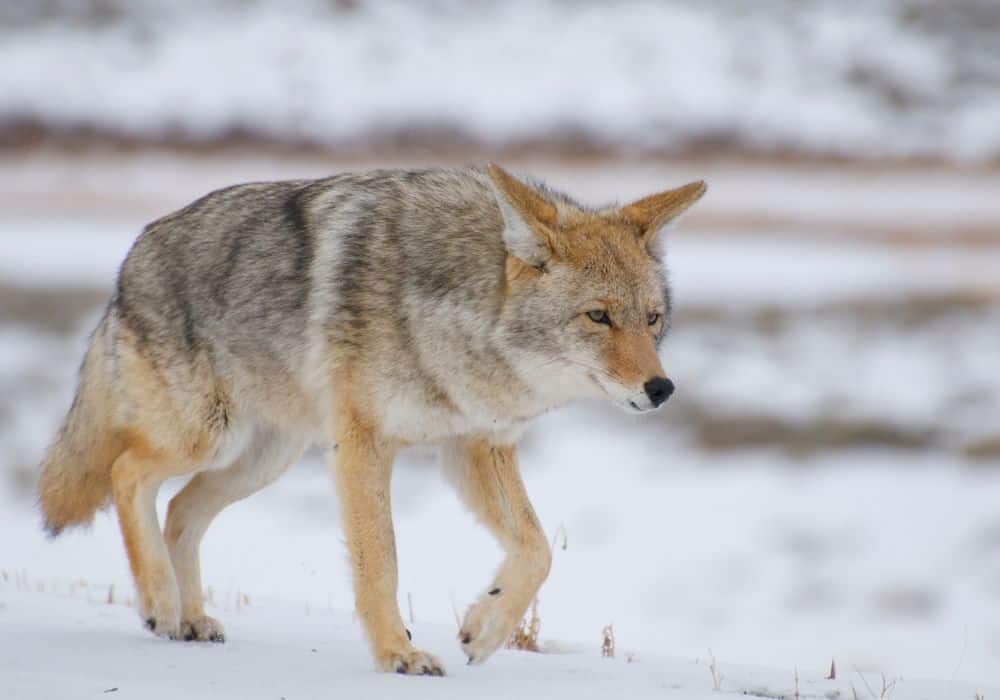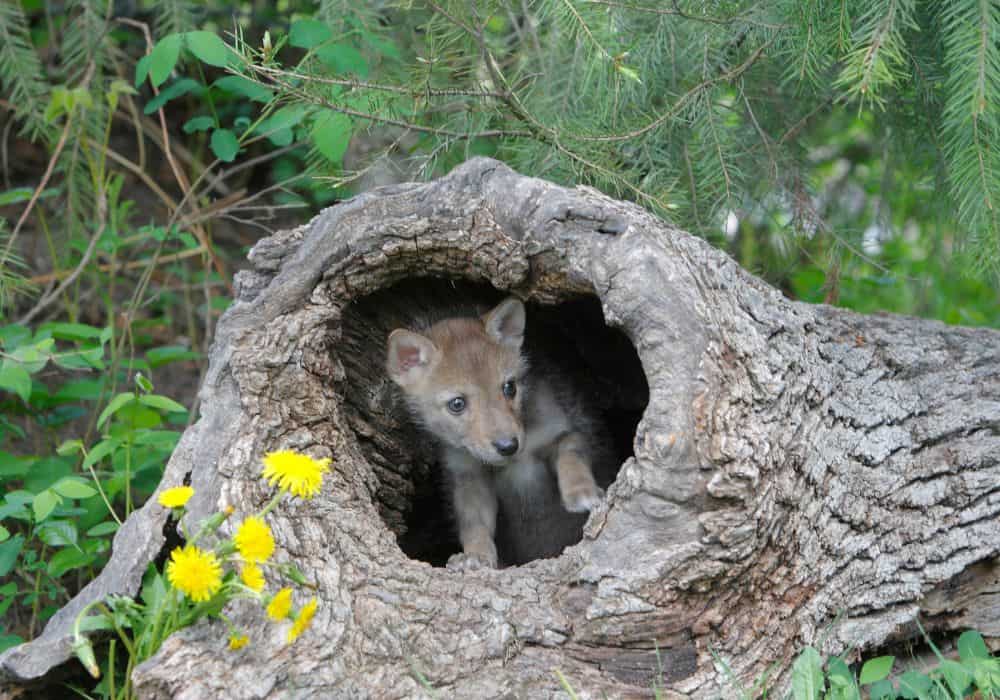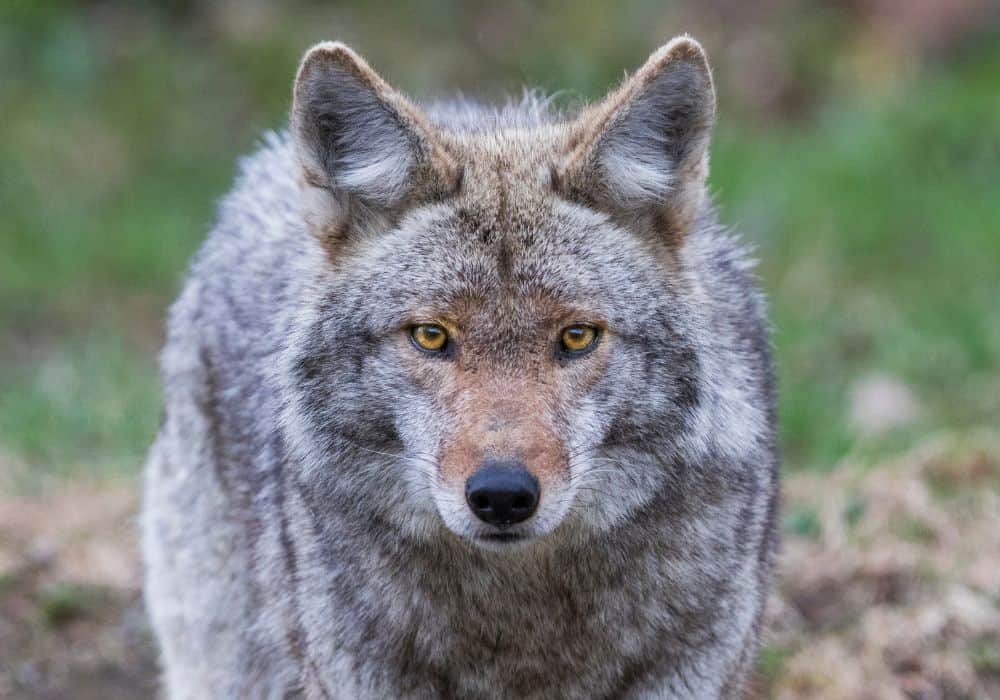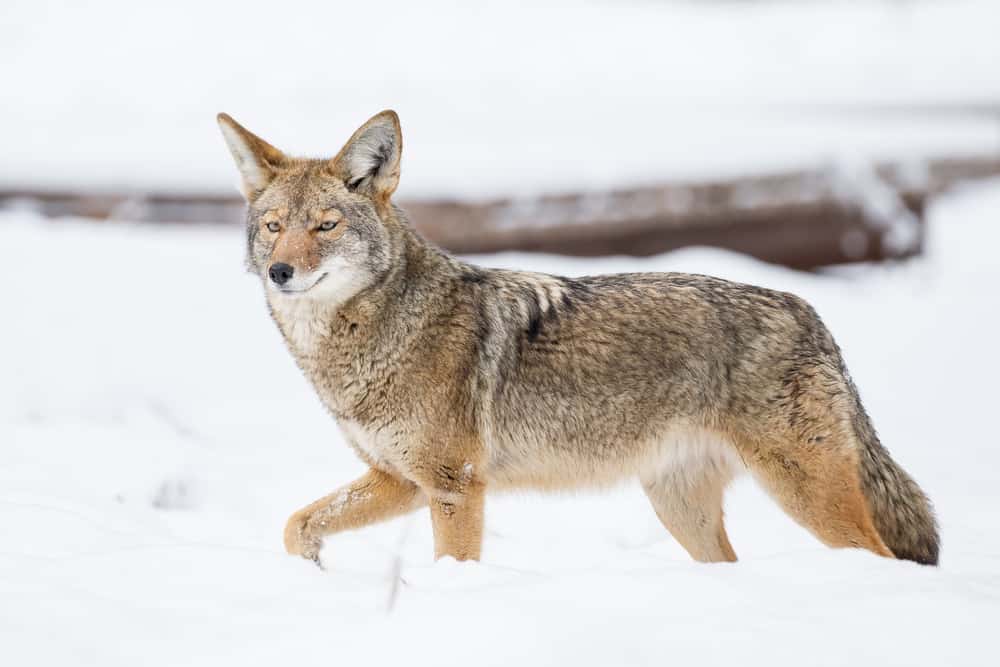What do you think of when you hear the word coyote? When many people think of coyotes, they often think of a fearsome predator that hunts in a pack and steels chickens from backyard chicken coops. With people and coyotes crossing paths more often, it is useful to understand their habits, such as where coyotes sleep at night.
In this article, we look at the different places where coyotes can choose to sleep. You will also find information on the sleeping habits of coyotes, why some coyotes have adjusted their natural sleep patterns, and where they sleep in the winter.
Where Coyotes Sleep

Coyotes are native to North America and their habitat covers most of the continent. They are secretive animals who prefer life away from urban areas. You may sometimes see them in a city, but you are more likely to come across them in open areas, such as grasslands and deserts.
Knowing what kind of places coyotes pick for sleeping can help you keep your distance from them when you are in areas where they live. It can also help you keep them off your property if they cannot find places to rest. Below you will find details of coyote sleeping spots.
Other Animals’ Burrows
Coyotes rarely spend more than one or two nights sleeping in the same place so it is not worth spending a lot of time creating a den. That is why you will often find them sleeping in burrows that were made by other animals, such as a badger, raccoon, fox, or skunk.
Since the hard work has already been done, all the coyote has to do is enlarge the burrow. Occasionally, the coyote will eat the original occupant of the burrow. For example, when they take over the burrow of a prairie dog.
Hollow Trees
Sometimes a coyote will make a den in a hollow log or tree stump. They are especially common choices for a female coyote with pups. How the coyote will pick the right hollow tree depends on the surroundings.
In open terrain, it will go for the log or tree stump that gives it the best views of the area. In a dense forest, they prefer logs that are surrounded by poison ivy, berry bushes, or other plants. Because it is harder to spot danger in the forest, the plants will give it better protection.
Dens
If the coyote cannot take over another animal’s burrow or there are no suitable hollow trees, it will dig its own den. When they have to dig a den, they look for areas with fairly soft soil to make the process easier.
Sometimes, if a coyote has lost its fear of people, it may choose a secluded backyard for its den. Should you find a coyote camping in your garden, don’t be tempted to deal with it yourself. They are dangerous predators so it is better to contact an animal control specialist.
Outcroppings
When coyotes look for a place to sleep, the most important factors of the shelter are safety and visibility. An outcropping, such as several boulders or a large pile of rocks will give it a place where it can stay undetected by people or predators while it rests.
If you live in an area where there are coyotes, you always need to pay close attention to outcroppings. While a coyote will normally avoid contact with people, if you surprise it, especially when it has pups, it may feel it has no choice but to defend itself and its family.

Coyotes in Urban Areas
As towns and cities have grown, many coyote habitats have been overtaken, forcing coyotes and people to live side by side. The benefits of this urban living environment are that there are very few predators and a regular supply of prey such as mice and rats.
Coyotes are not likely to raid your garbage can or eat your pets. Even in urban areas, they will avoid encounters with people as much as possible. They will usually seek out parks or other wooded areas within the city or a suburb. Golf courses are also great spots for coyotes offering them plenty of shelter among trees and bushes.
If a coyote cannot find a natural safe place to sleep, it will have to get more creative. In areas that lack green spaces, you might find them sleeping in abandoned buildings, alleyways, drainage pipes, and bridge underpasses.
Coyotes sleeping habits
Coyotes rarely spend more than a couple of nights sleeping in the same place. They change where they sleep regularly because of food supply and for safety. Therefore, if you have discovered a coyote sleeping on your land, it is not likely to be a problem for many nights.
However, if the coyotes have pups, they will create a longer-term shelter for their pups. The male and female coyote will work together to create the den. Sometimes they will dig a den, other times they will use a hollowed-out tree or a sheltered outcropping. You can watch this video to learn more about identifying a coyote’s den.
Are Coyotes Nocturnal?
Because coyotes often hunt near dawn or dusk, many people think they are nocturnal creatures. Their natural pattern is to sleep during the night and be active during the day. However, some coyotes have learned to sleep during the day and stay active at night.
The main reason for a coyote to change its sleeping habits is food. If its food source is better available during the night, it will sleep in the day and hunt in the night. Another reason is humans. When they live in urban areas, they might prefer to hunt under the cover of darkness to minimize encounters with people.
When a coyote lives near a supply of sheep, chickens, goats, or other small mammals, it may adapt its sleeping behavior. It will hunt at night when there will be less chance of the livestock’s human owners catching them.
Where Coyotes Sleep in the Winter?
While animals such as skunks or bears hibernate during the winter, coyotes are active all year round. Because they do not hibernate, they have adapted to harsh winter conditions, including facing the challenges of hunting in the cold and snow and finding warm places to sleep.
Their thick fur coats help them to stay warm. As the days grow colder in the autumn, they grow winter fur, which allows them to get through freezing days and keeps them warm even while sleeping.
Even during the coldest months, coyotes will not create a long-term shelter unless they have pups. They will usually look for shelter under a bush, outcropping, fallen tree, or a covered area on a farm or yard. Often they will also dig into the snow to create a spot to sleep in.
Males Change Their Sleeping Spot Every Few Nights
If you spot a coyote in the winter, it is likely to be a male coyote. While a female coyote will be looking after the pups in a more permanent den, the male is searching for a new mate. It will sometimes travel long distances in its search for a partner.
While the male coyote is on the move, it will sleep in any place where it can find shelter. They will generally sleep in the same spot for a couple of days only and then move on to continue their search.
When Are Coyotes Active?
The activity level of a coyote will also change during the year. There will be different times in the year when, for example, it will look for a mate or grow pups.
A coyote’s year starts by searching for a partner it can mate with. January to March is a very active time for especially the males as they roam large areas looking for a suitable mate.
Coyotes are also very active during the spring and summer months. After sheltering during the cold winter months, the pups born in the winter are now ready to leave the safety of their den and explore their surroundings. The parents will be busy hunting to feed their growing family.
Having spent the summer exploring and learning from their parents, the pups are old enough to leave their parents between October and January, depending on when they were born. They will set out on their own and start to look for a mate of their own. The parents will also be ready to mate again.

Conclusion
Like so many breeds, coyotes have lost large parts of their habitat to people as urban areas keep growing. While they prefer to live away from people, they sometimes have no choice but to coexist with us, and finding safe sleeping spaces where they can rest undetected by people is a key part of that coexistence.
We hope that you have found answers to all your questions about where coyotes sleep at night. If there is anything else you would like to know, you can write your questions in the comments section.
